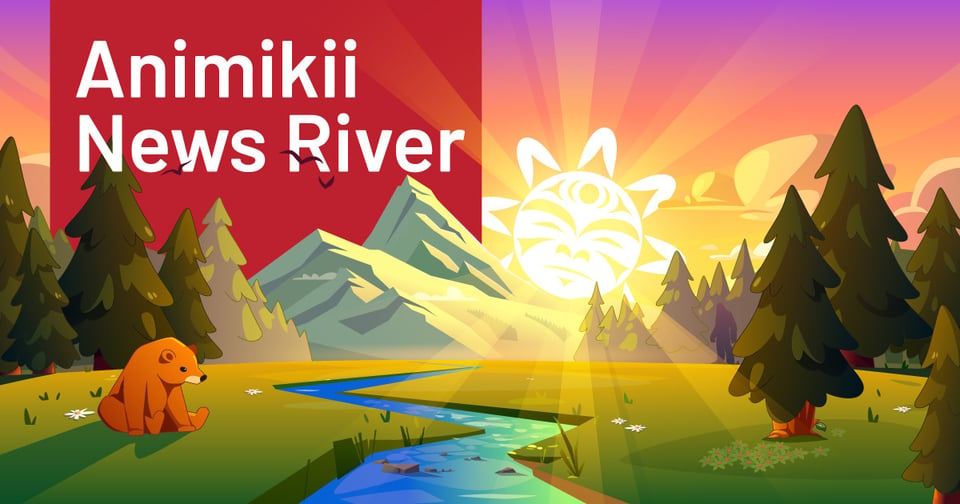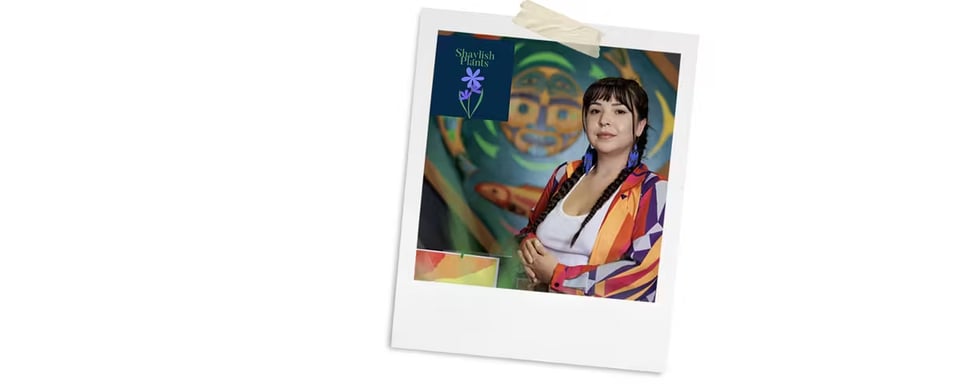Ecological and cultural relationships on the land and beyond
This week! Sharing Indigenous perspectives on conservation

Boozhoo News River Readers,
We’d love to share your stories in a future edition of this newsletter!
If you enjoy the stories in this week’s News River - we invite you to join the conversation - reply with a story or a link highlighting community members stewarding language, culture and knowledge where you live.
Thanks for being here!
This week’s stories include:
An article about a recent recipient of the Order of Quebec recognized for her development of interactive online games that help children learn Innu-aimun.
MOA Internship applications are now open for Indigenous people working in museums (or aspiring to), in the areas of Collections Management, Conservation, Library and Archives, Oral History Language Laboratory, and Curatorial work.
A story about returning home: “The existential question is: what’s a historic red cedar box, that came to life in a BC coastal community over 100 years ago, doing in a modern house in the Utah desert?”
Going Home: Listening to the Land, Learning from Our Relations

The big picture: Animikii strives to support Indigenous youth through its annual Technology and Entrepreneurship Awards. This week we feature the work of Shayla Chalifoux (Muskwasis) of St’át’imc Nation, Sekw’el’was community, and recipient of a 2024 Animikii scholarship. Shayla is the founder of Shaylish Indigenous Plant Selections, and is dedicated to empowering individuals, communities, and ecosystems by fostering the Indigenization of plant spaces to foster biodiversity and nurture a deeper connection to the tmicw (land).
Why it matters: Indigenous women are often at the heart of knowledge transfer in communities, and also the stewards of land, plants and water for millennia. Utilizing a holistic Two-Eyed Seeing approach in her work, Shayla integrates Indigenous wisdom and Western ecological practices, to deepen understanding of native and culturally significant plants.
Key points:
K’alán̓min̓ ta tmícwa (Listen to the land). Language revitalization is ano important part of Shayla’s work - she returned home to complete the St’át’imc language immersion class held in community of Sat̓ (Lillooet), further deepening her understanding of plant relatives who co-evolved with the ta tmícwa (the land) and her Ancestors, forming strong reciprocal bonds over time.
In growing her native plant nursery alongside her consulting work, she prioritizes culturally significant species to ensure they remain accessible to Indigenous communities, and adapts growing practices to help plants thrive under shifting conditions—with care, respect, and long-term vision in the face of changing climate.
Conventional conservation approaches lack a deep cultural connection to ta tmícwa (the land). There has been a lack of Indigenous-led conservation, and Shayla see’s that as a missed opportunity - there is much to learn from knowledge carriers, Indigenous Nations, and ta tmícwa (the land); we have to slow down (skenkínlec) and k̓alán̓ (listen).
What they’re saying:
“My mission is to grow native plants that reflect the diverse needs of Indigenous communities, support All Our Relations, and remain resilient in a changing world. For me, this work is about more than restoration—it’s about remembering, rebuilding, and re-rooting our relationships with the land. Through each plant I grow, I aim to cultivate not just biodiversity, but connection, resilience, and cultural continuity—strengthening the bond between land, people, and culture for generations to come.” Shayla Chalifoux, of Shaylish Indigenous Plant Selections
Learn more: Watch this presentation where Shayla encourages looking beyond traditional conservation methods to consider interacting with the land through both ecological and cultural relationships.
Curated Articles:
Museum of Anthropology Applications Open for Fall 2025 Indigenous Internship Program
This unique program provides training opportunities for Indigenous people working in museums, or who would like to, in the areas of Collections Management, Conservation, Library and Archives, Oral History Language Laboratory, and Curatorial work. Deadline to apply is July 20th, 2025. This internship program has been developed by six Indigenous partners: the Musqueam Indian Band, the Squamish Lil’wat Cultural Centre, the Haida Gwaii Museum, the U’mista Cultural Society, the Nlaka’pamux Nation, the Coqualeetza Cultural Society, and the Museum of Anthropology at UBC.
Stories from the Indigenous Internship Program: Becoming My Family’s Historian
My journey into learning about archives began with me asking my grandmother, who we call Ma, if she has any old photos of my dad. She told me to give her time to look around and to gather some together. A few days later I came home to about 900 negatives waiting for me! As an intern in the Fall 2024 cohort of MOA’s Indigenous Internship Program, I thought I would bring with me this project of learning to be my family’s historian in order to continue to build new skills. My main goal, however, was to learn to digitally scan my grandmother’s collection to ensure that these images are preserved for future generations. When I embarked on my educational journey here, I was fortunate to have the support of all the staff and be able to learn proper museum protocol.
Salmon, tribal sovereignty, and energy collide as US abandons Resilient Columbia Basin Agreement
The move threatens treaty rights and salmon recovery as energy demands from AI and crypto surge. Earlier this month, the Trump administration pulled the federal government out of the Resilient Columbia Basin Agreement — a deal struck in 2023 by the Biden administration between two states and four Indigenous nations aimed at restoring salmon populations and paving a way to remove four hydroelectric dams along the river system. The move is likely to revive decades-old lawsuits and further endanger already struggling salmon populations.
There’s an app for that: Inside the technological battle to save Indigenous languages
“I will fight until the day I die for my language to survive and thrive.” Yvette Mollen’s passion for championing Innu-aimun is unwavering. The professor, researcher, author and web content developer has dedicated most of her adult life to recording, preserving and passing on her ancestors’ tongue, an Algonquian language spoken by some 10,000 Innu in Quebec and Labrador. One way she does this is by developing interactive online games that help children learn Innu-aimun, while also seeing how their people lived, and still could live, on the land. For Ms. Mollen — the recipient in 2024 of the Order of Quebec for her linguistic initiatives — Innu-aimun is the language closest to her heart, but all languages matter and deserve support to stay alive. “Because if the Creator had wanted us all to speak the same language, he would have made it so,” she says.
The unlikely return of the bentwood box underscores the challenges facing Indigenous communities working to reclaim items raided from their lands. “The existential question is: what’s a historic red cedar box, that came to life in the BC coastal community over 100 years ago, doing in a modern house in the Utah desert?” said Janet. “There was really no satisfactory answer for that. There was never any thought that it should end up in a museum. It had to go home.” The returned box represents a broader effort by the Heiltsuk nation to repatriate more than 1,000 items at more than three dozen institutions around the world – and countless private collections.

